- Kenmore refrigerator water filters
- Whirlpool refrigerator water filters
- Samsung refrigerator water filters
- GE refrigerator water filters
- LG refrigerator water filters
- Frigidaire refrigerator water filters
- KitchenAid refrigerator water filters
- Maytag refrigerator water filters
- Kenmore Elite refrigerator water filters
- Estate refrigerator water filters
- GE Profile refrigerator water filters
- Amana refrigerator water filters
- Bosch refrigerator water filters
- Dacor refrigerator water filters
- Electrolux refrigerator water filters
Can’t find your part? Contact us: +1-309-603-4777
Top DIY repair help
View All Repair Categories
Appliances
Lawn & Garden
Power Tools
Home Improvement
Sports & Leisure
Heating & Cooling
OrdersSchedule a repair
Keep track of the models you own in your profile
Sign in or Register to view or add models
Tiller: Why does my tiller turn the soil poorly?
Worn or damaged tines, broken tine shaft clevis pins, a worn drive belt, a faulty transmission, a problem with the clutch cable, improper depth-stake setting or bad soil conditions can cause a tiller to do a poor job turning the soil.
The soil must be moist enough that it forms a ball when you squeeze it in your hand, but dry enough that the ball falls apart when dropped. Check soil conditions and water the area that you're tilling if the ground is too dry. Let the ground dry out if soil is too wet.
Check the depth stake setting and adjust it for the type of soil you're cultivating. Lower the depth stake to till at a 1-inch depth when using the tiller on soil for the first time or when breaking up hard soil. Also use the 1-inch depth setting to break up sod for shallow cultivation. Raise the depth stake to till loose soil and for deep cultivation.
Check the condition of the tiller tines and replace worn or damaged tines.
If tines don't rotate when the tine shaft turns during tilling, check the tine shaft clevis pins. The clevis pins are shear pins that connect the tines to the rotating tine shaft. The clevis pins are designed to shear off if the tines hit a fixed object during cultivation to prevent damage to the engine and other tiller components. Replace any broken tine shaft clevis pins.
If the tiller doesn't move and the tines don't spin when you pull the bail arm up against the handle, adjust the clutch cable to spin the drive belt when you pull the bail arm up. Replace the clutch cable if it's damaged. Replace the drive belt if it's worn or broken.
If the drive belt spins the transmission pulley but the transmission pulley won't move the wheels or the tines, replace the transmission.

THESE REPAIRS MAY HELP SOLVE YOUR TILLER PROBLEM

Replace the tiller tines
The tines can bend or break if they hit a fixed object during cultivation. The can also get dull and wear out. Replace the tines if they are worn or damaged.
Tiller tines
Find the required part specific to your product.
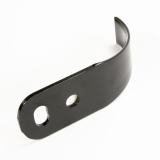
How to replace the tines on a front-tine tiller
When a front-tine tiller isn’t digging into the soil well, the tines might be bent or worn. This easy DIY repair guide shows how to replace the tines on a front-tine tiller in about 15 minutes.
Repair difficulty
Time required
15 minutes or less
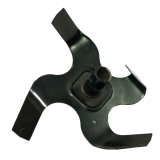
How to replace the tines on a rear-tine tiller
If your rear-tine tiller isn't turning soil like it should, the tines could be worn or bent. This DIY repair guide shows how to replace the tines on a rear-tine tiller in less than 30 minutes.
Repair difficulty
Time required
30 minutes or less
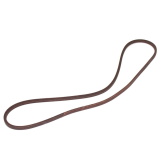
Replace the tiller drive belt
The drive belt connects the engine pulley to the transmission to drive the wheels and tines on the tiller. A worn belt slips, resulting in poor tilling. Replace the belt if it is worn or broken.
Tiller drive belt
Find the required part specific to your product.
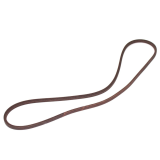
How to replace a tiller drive belt
If your tiller won’t move forward or the tines won’t turn, the drive belt might be broken or worn. This DIY repair guide shows how to replace a tiller drive belt in 6 easy steps.
Repair difficulty
Time required
15 minutes or less

Adjust or replace the tiller clutch cable
The clutch cable engages and disengages the drive system on the tiller. Test the drive system and adjust the clutch cable if necessary. If the cable is damaged or broken, replace it.
Adjust or replace the tiller clutch cable
Find the required part specific to your product.

Replace the tiller tine shaft clevis pin
A clevis pin attaches the tines to the rotating tine shaft. The clevis pin is designed to shear off if the tines hit a fixed object while cultivating to protect the engine. Replace the clevis pin on the tine shaft if it breaks.
Tiller tine shaft clevis pin
Find the required part specific to your product.
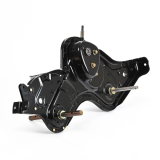
Replace the tiller transmission
The transmission controls the motion of the wheels and/or tines on a tiller. An internal gear failure in the transmission can prevent the tines from turning or the wheels from moving. Replace the transmission if it won't drive the tiller components properly.
Tiller transmission
Find the required part specific to your product.
Was this information helpful?
Most common symptoms to help you fix your tillers
Choose a symptom to see related tiller repairs.
Main causes: clutch cable problems, faulty transmission…
Main causes: damaged tines, broken clevis pins, worn drive belt, faulty transmission, clutch cable problems, improper de…
Main causes: worn or broken drive belts, bad transmission, clutch cable problems…
Main causes: leaky engine head gasket, damaged sump gasket, damaged oil drain plug seal, loose or cracked fuel line, lea…
Main causes: broken shaft clevis pins, transmission failure…
Main causes: dirty carburetor, engine needs tune up, stale gas…
Main causes: carburetor failure, bad gasoline, dirty spark plug, broken recoil starter…
Most common repair guides to help fix your tillers
These step-by-step repair guides will help you safely fix what’s broken on your tiller.

How to replace a tiller recoil starter
The recoil starter spins the engine when you pull the starter rope, and the rope retracts when released. If the recoil s…
Repair difficulty
Time required
15 minutes or less
Effective articles & videos to help repair your tillers
Use the advice and tips in these articles and videos to get the most out of your tiller.

Learn about all the convenient features on our Sears PartsDirect website that make your parts purchases easier.…
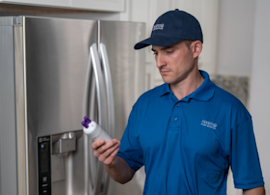
Get answers to frequently asked questions about Sears and Sears PartsDirect.…
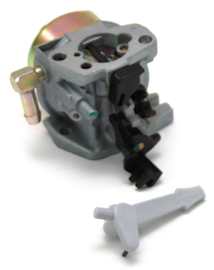
This chart will help you find the right carburetor for your Craftsman snowblower, tiller or log splitter.…
Parts & More
Parts
Exhaust Elbow 155-2982 partsRefrigerator Lamp Case DA61-03163A partsBlow Housing 373-17827-001 partsHome Electronics Integrated Circuit PD4302 partsPCB Timing Control Board BN95-01312A partsRefrigerator Thermostat WPW10268920 partsHigh Alt Cov WB28T10185 partsStarter (txt 191-0150 partsModule Box 286457-00 partsDishwasher Console Assembly 5304480747 partsRange Bake Element 211553 partsBucket 1188913 partsFurnace Blower Fan Motor Mounting Ring RNG00957 partsEvaporator DA96-01007K partsGear Box Assembly 917-0871A partsRefrigerator Valve 838456 partsSnowblower Belt 07232500 partsCooktop Burner Cap PA080016 partsFreezer Compressor 5304506472 partsDoor Closer 7014656 parts